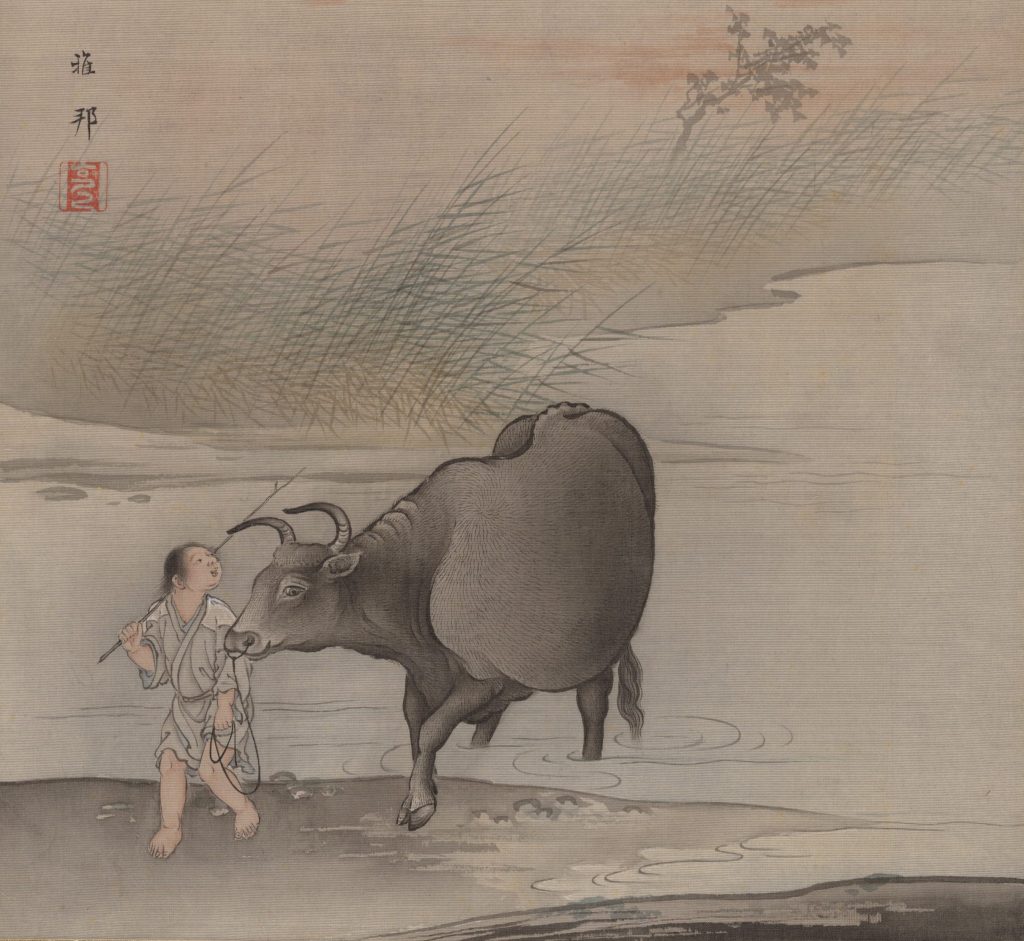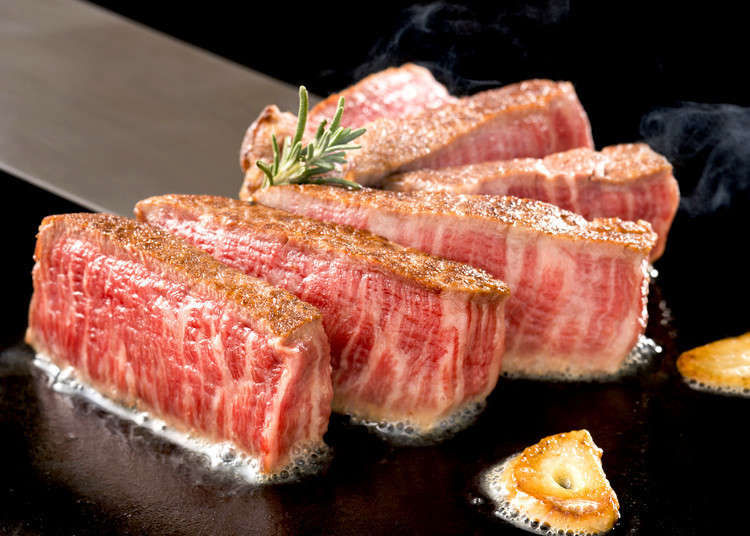It is said, Cattle were brought to Japan from China at around the same time as rice cultivation, which was in the second century AD. The cattle were used as work beasts, and up until the Meiji period, these were luxury items beyond the reach of most of the country’s farmers.
Beef was not eaten for religious and cultural reasons during this time, whilst dairy was then not a part of the Japanese diet. The Feudal era of Japan led to the Edo period (1603-1867), with saw the shogunate enforced policy of ‘sakoku’, and this saw Japan exist in isolation for the next two and a half centuries.
In the first 20 years of the Meiji restoration, (which began in 1868) several thousand foreign cattle were imported into the country and cross-bred with local species. However, this cross-breeding was halted abruptly in 1910 when it was realized that the working capacity of these beasts was inferior.
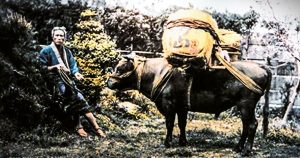 This was a time when ships from around the world began to arrive in Japan after the long period of isolation. In the port at Kobe, foreign seaman soon took a liking to loading up their ships with the high-quality beef available there. The local ban on eating beef was lifted, and before long the beef from Kobe was gaining a reputation for its quality.
This was a time when ships from around the world began to arrive in Japan after the long period of isolation. In the port at Kobe, foreign seaman soon took a liking to loading up their ships with the high-quality beef available there. The local ban on eating beef was lifted, and before long the beef from Kobe was gaining a reputation for its quality.
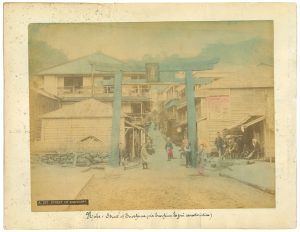 According to Dr. Kiyoshi Namikawa of the Wagyu Registry Association: from 1919 these crossbreeds were registered and selected as “Improved Japanese Cattle”, four strains would go on to be recognized as breeds in 1944.
According to Dr. Kiyoshi Namikawa of the Wagyu Registry Association: from 1919 these crossbreeds were registered and selected as “Improved Japanese Cattle”, four strains would go on to be recognized as breeds in 1944.
These were the four ‘Wagyu’ breeds: Japanese Black, Japanese Brown, Japanese Polled and Japanese Shorthorn. Wagyu (和牛): Wa = Japanese and, Gyu = Cow, is therefore simply the Japanese word for “Japanese Cow”, which is any one of these four breeds.
The breed known as Kuroge Washu 黒毛和種, (Japanese Black), today makes up 90 percent of all cattle fattened for consumption in Japan. This is due to its genetic predisposition for creating ultra-fine-grained, speckled marbling, something that has made Japanese beef famous all over the world.
Now here is where it gets really interesting: according to research done in 2012 by the Japanese Wagyu Registry Association, it was found that 99.9% of all Kuroge Washu breeding mothers have their ancestry traced back to a single master bull, whose name was “Tajiri” (1939 – 1959), a very special bull indeed.
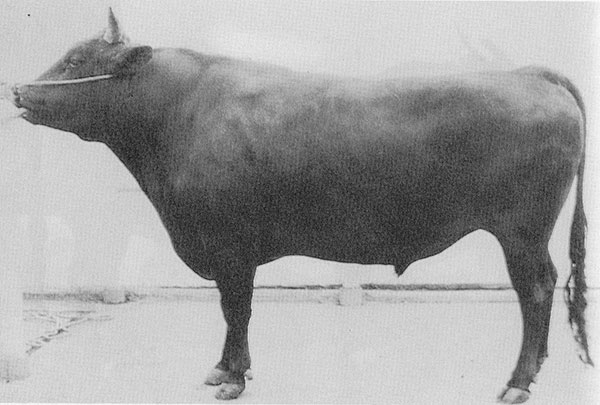 There are several bloodlines of Kuroge Wasghu, which were originally draft animals, selected for their physical endurance. This favored the animal with more intra-muscular fat cells – ‘marbling’ – which provided a readily available energy source.
There are several bloodlines of Kuroge Wasghu, which were originally draft animals, selected for their physical endurance. This favored the animal with more intra-muscular fat cells – ‘marbling’ – which provided a readily available energy source.
The three major black strains – Tajiri or Tajima, Fujiyoshi (Shimane), and Kedaka (Tottori) evolved due to geographical isolation in Japan. Tajima is therefore a bloodline of the Kuroge Washu breed and a descendent of the master bull Tajiri.
Tajima cattle produce the best Wagyu beef in Japan, because of the large eye muscle and melt-in-the-mouth marbling; Tajima cattle are a smaller animal, they grow slowly, only a limited amount of this beef is available at any time. Tajima is indeed the most famous beef in the world when it comes to rich, fatty, marble scoring, it has been called the ‘caviar’ of beef.
To be called ‘Kobe Beef’ it must be Tajima beef raised in Hyogo prefecture and it must meet a certain set of criteria; including the A5+ rating. Only then can this meat carry the brand name, ‘Kobe Beef’, beware of imposters. There is only a small number of certified Kobe beasts each year, (usually less than 4,000 head) and almost all of it is sold in Japan. In fact, the first Kobe beef to ever be exported was in 2012 to Macau, HK soon followed in the same year, eventually, other markets, including the United States, gained access to small allocations.
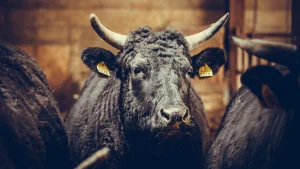 There are many other prestigious Tajima and Kuroge Washu beef brands in Japan. Since 1966, every five years Japan holds the Zenyko, (全共) also known as the ‘Wagyu Olympics’ where awards are given for breed improvement and meat quality, (across eleven competitive categories). The beef of Hyogo prefecture has won here before, but the beef of Miyazaki Prefecture has won an unprecedented three times. At the most recent games in 2017, beef from Kagoshima Prefecture was declared the overall winner.
There are many other prestigious Tajima and Kuroge Washu beef brands in Japan. Since 1966, every five years Japan holds the Zenyko, (全共) also known as the ‘Wagyu Olympics’ where awards are given for breed improvement and meat quality, (across eleven competitive categories). The beef of Hyogo prefecture has won here before, but the beef of Miyazaki Prefecture has won an unprecedented three times. At the most recent games in 2017, beef from Kagoshima Prefecture was declared the overall winner.
The Japanese grading system has many confused, it is a marble score grade from 1 to 12. However, they also look at many other characteristics of the carcasses and have an overall grade where A5 is the highest grade (you only need a marble score of 8+ to qualify for A5). When a carcass is graded, the grade is decided at one point in the animal and the whole animal is considered this grade; in Japan, it is between the 6th and 7th rib.
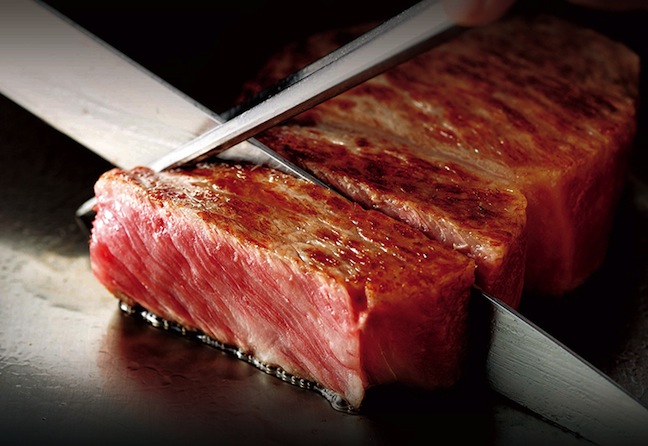 In 1976 live Wagyu cattle were exported for the first time, when four live Wagyu bulls were sent to the United States of America. In 1993 more livestock was exported and these included females as well as bulls. Semen and embryos from these cows soon made their way to Australia. Export of live Wagyu cattle, embryos, and semen to Australia and the USA accelerated over the next few years however, this was still on a relatively small scale. In 1997 Japan banned all exports of live Wagyu cattle, embryos, semen, or DNA outside of Japan.
In 1976 live Wagyu cattle were exported for the first time, when four live Wagyu bulls were sent to the United States of America. In 1993 more livestock was exported and these included females as well as bulls. Semen and embryos from these cows soon made their way to Australia. Export of live Wagyu cattle, embryos, and semen to Australia and the USA accelerated over the next few years however, this was still on a relatively small scale. In 1997 Japan banned all exports of live Wagyu cattle, embryos, semen, or DNA outside of Japan.
However, a healthy industry in breeding and trade in Wagyu, (including Tajima) exists in Australia and the United Stated, due to the number of cattle, embryos, and semen exported during the 20-year window between 1976 and 1997. Exporting the meat was also banned for a time, but this was lifted in 2012.
Happy Cows
There are tales of Kobe living in spa-like conditions: receiving shiatsu massages and being force-fed beer and sake to a lilting Mozart soundtrack in the background; none of which is entirely true. That is not to say that a farmer will not select a particular cow or two to receive massages during the fattening process, or give a cow that is off its food, (during summer) a beer to stimulate its appetite.
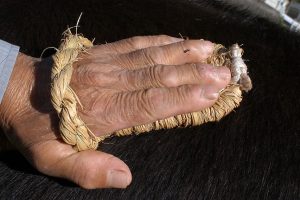 The minimization of animal stress is a critically important consideration to Japanese cattle-raising, and due to the scarcity of land, grazing just isn’t possible. Cattle are raised in expansive, open-air barns where they are protected from the elements and can be closely tended to. Diet is strictly monitored, usually a mix of specialized grains, corn silage, hay, and cereals. Cleanliness on these properties must be pristine. This is how it has always been done in Japan and they will tell you it makes for happy cows.
The minimization of animal stress is a critically important consideration to Japanese cattle-raising, and due to the scarcity of land, grazing just isn’t possible. Cattle are raised in expansive, open-air barns where they are protected from the elements and can be closely tended to. Diet is strictly monitored, usually a mix of specialized grains, corn silage, hay, and cereals. Cleanliness on these properties must be pristine. This is how it has always been done in Japan and they will tell you it makes for happy cows.
Good Fat
Such is the rich fat content of A5 Wagyu that it simply melts in your mouth, a sensation likened to that of the finest caviar, warm caramel, or beef flavoured butter, dazzlingly rich in umami flavour. This is why it is usually eaten in thin slices or small cubes in Japan, as this is usually enough to leave one feeling sated.
With all that fat, it’s not all bad news as a study by the Japan Livestock Industry Association, cited by CNN noted that Wagyu beef has up to 30% more unsaturated fat than Angus cattle. An article by Takafumi Gotoh and Seon-Tea Joo titled “Characteristics and Health Benefit of Highly Marbled Wagyu and Hanwoo Beef” and published in the journal of The Korean Society for Food Science of Animal Resources concluded:
‘Highly marbled Wagyu beef has higher proportions of Monounsaturated fatty acids, (MUFAs) due to higher concentrations of oleic acid. Many studies have shown that MUFAs have little effect on total cholesterol. They are heart-healthy dietary fat because they can lower LDL cholesterol while increasing HDL cholesterol. Clinical trials have also indicated that highly marbled beef does not increase LDL cholesterol and that beef high in oleic acid can consistently increase HDL cholesterol. Finally, published medical literature has concluded that high-oleic acid beef such as Wagyu may actually reduce risk factors for cardiovascular diseases.’
Eating high-quality Tajima beef is a unique event, especially of the A5+ grading, it deserves special consideration with the wine pairing in order to get the very best out of the experience. Typical, ‘go-to’ beef wines such as a firm Medoc or a rich Barossa Shiraz do not apply here, they are just too over-powering for the subtle flavours and creamy texture of this unique protein.
I am looking for a little less fruit weight, so as not to overwhelm the subtler and more complex beef flavours and I am looking more for the wash of fine acidity rather than the scrape of drying tannins to cleanse my palate of the rich and fatty tissue, (a little ripe, fine tannin is good, you just don’t want a big, beasty tannin monster here).
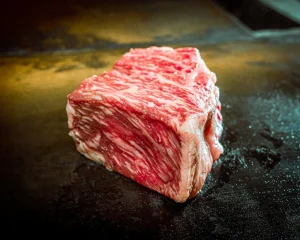 Try it with a Bordeaux Blend from a Right Bank appellation such as Saint Emilion, (Clos Fortet) or an old-vine Grenache from McLaren Vale, (d’Arenberg) a ripe Tuscan Sangiovese, (Ricasoli), a Chilean Carmenere or, for that really high marble score a bold Otago Pinot Noir, (Nanny Goat Vineyard) from New Zealand.
Try it with a Bordeaux Blend from a Right Bank appellation such as Saint Emilion, (Clos Fortet) or an old-vine Grenache from McLaren Vale, (d’Arenberg) a ripe Tuscan Sangiovese, (Ricasoli), a Chilean Carmenere or, for that really high marble score a bold Otago Pinot Noir, (Nanny Goat Vineyard) from New Zealand.
In a colder climate, a few small cubes of sizzling Wagyu washed down with a warm, dry-to-medium-dry sake is pure joy.
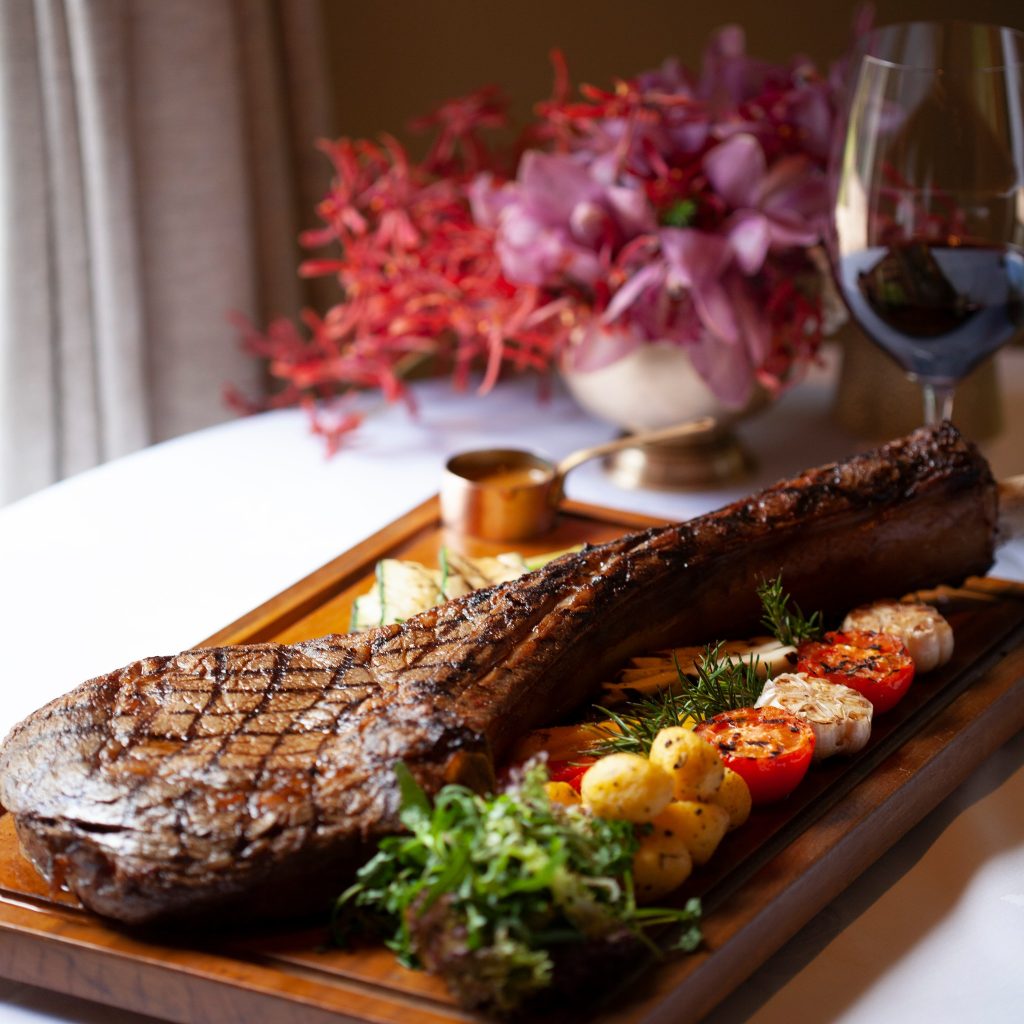 At Topaz restaurant in Phnom Penh, try the Tajima tomahawk with a Cote Rotie from the Northern Rhone.
At Topaz restaurant in Phnom Penh, try the Tajima tomahawk with a Cote Rotie from the Northern Rhone.

